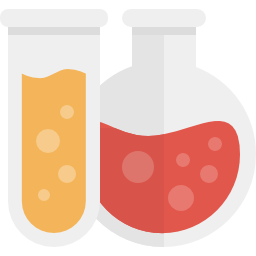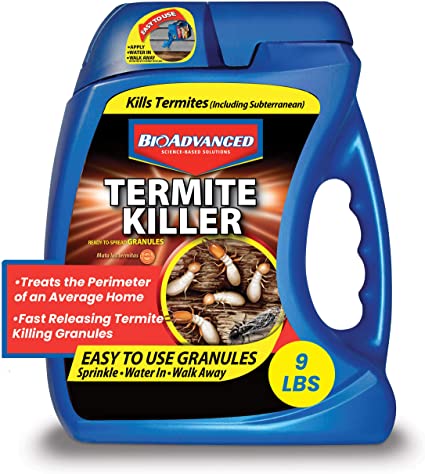Insecticide For Termite Control
In Arizona, termites can cause billions of dollars worth of damage per year, more than fires. Termites primarily feed on wood, but also damage paper, books, insulation, and even swimming pool liners and filtration systems. Plus, these little bugs never sleep, they are able to eat their way through your home at any time, night or day.
If you find any tunnels under or over your foundation walls, support piers, floor joists, or have objects made out of wood and you saw just a single termite flying in your house, there is a strong possibility that there could be a termite colony close. It’s better if you control the situation as soon as possible with a good termite treatment in Gilbert or they will end up causing a lot of damage.
You can hardly do a termite control on your own, ridding a home of these insects requires special skills and equipment. Knowledge of construction could help identify what the critical areas where termites are likely to enter. Termites usually live in places where they can hide and are hard to access. To eliminate them you must be in contact with chemicals, and if you do not know how to use them or do not have the necessary accessories, you could be at risk. All pesticides can be toxic to humans if sufficient amounts are absorbed through the skin, inhaled or swallowed, and some can also be moderately irritating to the skin and eyes.

What chemicals can I use for termite treatment in Arizona?
After a termite inspection in Gilbert, there are two general categories of termite treatment: liquids and baits, being the soil-applied liquid termicides the most effective and used in Arizona. It has as a purpose provide a long-lasting chemical barrier that excludes termites in the ground from entering buildings. In most cases, termites in the structure die off as well, since they cannot return to the soil. The chemicals in this termicide usually contain could be arsenic trioxide, bifenthin, permethrin, fipronil, and imidacloprid. In this article, we will explain to you about each one and its characteristics:
• Arsenic trioxide: Also known as Arsenious Oxide and White Arsenic, is just one of many arsenial compounds used in pest control and other industries. Instead of termite control, this is used in timber preservation, as herbicides, and as a chemotherapy drug too!!
This chemical is a heavy, odorless and tasteless white powder, only slightly soluble in water. It is highly toxic to mammals and insects if consumed, and much more toxic when used as a finely ground material rather than the coarser commercial grade. The main risks to users are either from entry via skin wounds or by breathing floating dust. Some users may develop dermatitis if there is frequent skin contamination. Do not use it as a soil treatment.
• Bifenthrin: Registered for both pre-construction barrier treatments in new buildings and for perimeter barrier treatments around existing buildings. It is a synthetic pyrethroid pesticide. Currently, there is a choice of three concentrations at which this chemical may be legally applied. These concentrations are 0.1%, 0.05% and 0.25%. Each of these rates provide different lengths of protection, they are as follows – at least 10 years, 10 years and 3 years respectively. Bifenthrin is classified as being of medium to high toxicity to humans.
• Permethrin: This is a pyrethroid. Permethrin is a synthetic chemical that remains effective for longer periods of time. It is registered for the control of active termites in trees and tree stumps only, for the purpose of nest destruction. Tend to be used for subterranean termite control in Gilbert, pretreatments, post construction treatments and foam applications. This product is of low to medium toxicity to humans.
• Fipronil: Often applied for broad-use insect control. Fipronil is an extremely active insecticide belonging to the phenylpyrazole family. It is used to create a barrier around existing buildings only. Termites are attracted to the chemical where they die, partly from the effect of the chemical and partly from infection with fungi and other soil microorganisms. Fipronil is of low to medium toxicity to humans.
• Imidacloprid: A systemic insecticide which acts on the central nervous system of insects and belongs to a class of chemicals called the neonicotinoids. Because imidacloprid binds much more strongly to insect neuron receptors than to mammals, this insecticide is more toxic to insect. It is of low to medium toxicity to humans.

Some Anti-termite chemical manufacturers:
US Borax Inc.:
Started in 1872 and today they are the leading producer of borates in the world. Member of the Rio Tinto group. Borax is acknowledged as the world leader in borate technology, research and development. Technical support for customers, product quality, and supply reliability are the pillars of their commercial commitment. They are the main manufacturer of the wood preservative, insecticide and fungicide Timbor.
Address: 8051 E. Maplewood Ave. Building 4, Greenwood Village, CO 80111, USA
Phone: +1 303 713 5000
Email: [email protected]
Control Solutions Inc.:
This company develops and manufactures solutions for the professional pest management, commercial turf and landscape, companion and production animal, and consumer lawn and garden markets. Founded in 1958. Now it is a partner with ADAMA Consumer & Professional Solutions.
Address: 5903 Genoa-Red Bluff Road. Pasadena, TX 77507
Phone: (281) 892-2500
Toll-Free: (800) 242-5562
Fax: (281) 892-2501
Ensystex:
Founded in 1994 by pest control operators. Developers of EXTERRA and the Thor line of products.
To contact them you can call to:
Phone: 888-398-3772
Fax: 888-368-4749
Insecticide For Termite Control
Termite is a dangerous insect that can destroy your house and property. It can cause serious damage to the exterior of your home and the structure of your home. It is important to take steps to protect yourself from termite infestation.
There are several products available to help you get rid of termites, but not all of them are effective. Some products only offer short term relief from termites while other can provide long lasting protection against them.
One of the most effective ways to get rid of termites is by using an insecticide that contains permethrin. This is a natural product that will kill any type of insect such as ants or spiders without causing harm to humans or pets if used correctly according to manufacturer instructions.
Permethrin works by paralyzing insects so they cannot move or attack humans or pets when sprayed directly on them; however, it does not kill them immediately when sprayed directly on their bodies because they dry up after a few days dying slowly which makes them more susceptible to secondary infections like pneumonia while others die instantly due to lack of oxygen intake from breathing in too much permethrin fumes when sprayed directly inside their burrows during rainy seasons when there are high winds blowing outside where these insects live under ground away from predators looking for food such as
List Of Insecticide For Termite Control
- Effective Against Termites, Wood Destroying Beetles, Carpenter Ants, and More
- Also Use to Control Wood Rot and Mold
- For Infestation and Prevention
- Simply Mix & Spray 16oz Disodium Octaborate Tetrahydrate Powder Makes 1 Gallon Liquid Spray
- Odorless and Non Flammable and Covers 200 Sq. Feet
Additional Info :
| Color | White |
| Item Dimensions | |
| Height | 1 Inches |
| Width | 1 Inches |
| Length | 1 Inches |
| Weight | 1.1 Pounds |
- Controls home invading insects, lawn insects, insects on ornamentals plus trench and fence post termite recommendations.
- Insects Controlled: Borers, Bark Beetles, Aphids, Bagworms, Mosquitoes, Ants, Beetles, Cockroaches, Earwigs, Mole Crickets, Spiders and many others listed on the label.
Additional Info :
| Item Dimensions | |
| Height | 8 Inches |
| Width | 3 Inches |
| Length | 3 Inches |
| Weight | 1 Pounds |
- READY TO USE – These convenient granules are ready for use and provide effective, long lasting insect control for up to 8 weeks in your flower beds, roses, and shrubs. Apply it every 8 weeks throughout the growing season for optimal protection.
- PEST CONTROL – Bonide Systemic Granules kill tough houseplant pests like fungus, gnats, mealybug, whitefly, termite, aphids, and more. Be considerate of animals and bugs like hummingbirds and bees that could be harmed from use of this product.
- NO SPRAYING – There is no mess associated with this pesticide because it is not a spray. The dry-application granules are easy to use, control, and apply without worrying about destroying clothing or other plants.
- FOR NON-EDIBLE PLANTS – This insect killer treatment is not meant for vegetable or fruit plants. This product is labeled for use on flower beds, roses, shrubs, and the like, but it is not labeled for use on any edibles.
- HOW IT WORKS – After incorporating the granules into the soil and watering them in, the pesticide is absorbed by the roots where it moves through the plants to assist in protection against the listed bugs.
Additional Info :
| Item Dimensions | |
| Height | 1 Inches |
| Width | 1 Inches |
| Length | 1 Inches |
| Weight | 1 Pounds |
- Used Book in Good Condition
Additional Info :
| Item Dimensions | |
| Height | 4.99999 Inches |
| Width | 0.1657477 Inches |
| Length | 7.99211 Inches |
| Weight | 0.18959754532 Pounds |
- Versatile – For indoor and outdoor use as a spot or crack and crevice treatment
- Long Lasting – Keeps killing carpenter ants for 1 month after initial application
- Ready to Use – Use the included trigger sprayer to effectively treat areas where ants / termite activity is seen
- Odorless Formula – Odorless and non-staining formula will not cause damage to fabrics when used according to label directions
- EPA Registered – Registered with the Environmental Protection Agency (No. 3-11) for indoor and outdoor residential use
Additional Info :





